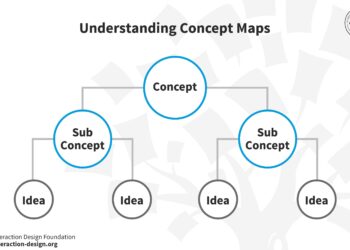In a bold move that underscores the complexities of international trade relations, the United States has publicly criticized Japan for it’s staggering 700% tariff on rice imports.This decision, which the U.S. claims disproportionately impacts American farmers and disrupts fair market practices, has prompted discussions about potential retaliatory measures. As trade tensions simmer, the U.S. is hinting at the possibility of imposing its own levies in response to what it sees as Japan’s protectionist policies. This article delves into the implications of Japan’s high rice tariffs, the U.S. response, and the broader context of agricultural trade between the two nations, spotlighting the challenges faced by farmers and exporters in an increasingly competitive global market.
US Government Critiques Japan’s Agricultural Protectionism and Its Economic Implications
The recent critique from the US government regarding japan’s steep agricultural tariffs, notably the staggering 700% levies on rice, has reignited debates about agricultural protectionism and its broader economic ramifications. The United States argues that such extremely high tariffs limit market access for American farmers, disrupting fair trade practices and hampering competition. The economic implications are profound, with American farmers facing substantial revenue losses and making it increasingly tough for them to compete on a global scale with nations that adopt more liberal trade policies.
Moreover, this protectionist stance not only affects bilateral relations but also stifles innovation and efficiency within japan’s agricultural sector. Key concerns include:
- Reduced competition that may lead to stagnation in agricultural practices.
- Higher prices for consumers due to lack of affordable imports.
- potential retaliation from trading partners,escalating trade tensions.
To illustrate the imbalance created by these tariffs, the following table highlights the stark differences in tariff rates between the US and Japan for selected agricultural products:
| Product | US Tariff Rate (%) | Japan Tariff Rate (%) |
|---|---|---|
| Rice | 1.0 | 700.0 |
| Beef | 26.4 | 38.5 |
| Wheat | 0.0 | 1.6 |

Analysis of the 700% Rice Tariff and Its Impact on International Trade Relations
The controversial *700% rice tariff* imposed by Japan has ignited a fierce backlash from the United States, with potential implications that reverberate thru international trade channels. this steep duty is seen as a significant barrier to entry for American rice producers, effectively shielding Japanese farmers from foreign competition while inflating consumer prices domestically. The U.S. government has raised concerns that such protectionist measures not only distort market dynamics but could also lead to retaliatory actions,thereby escalating trade tensions between the two nations. Analysts suggest that Japan’s protectionist stance may hinder the establishment of a more balanced and cooperative trade surroundings in the Asia-Pacific region.
In response to these developments, several trade experts indicate the likelihood of the U.S. leveraging its position during future trade negotiations. Key strategies may include the following:
- Threat of Tariffs: The U.S. might impose its own tariffs on Japanese goods.
- Diplomatic Pressure: Engaging international allies to collectively address Japan’s trade barriers.
- Trade Agreements: Proposing terms that curtail high tariffs in exchange for broader market access.
| Impact Area | Potential Consequences |
|---|---|
| U.S. Farmers | Reduced market access, lower sales, price instability. |
| Consumer Prices | Increased rice prices in Japan, lowered competition. |
| International Relations | Possible strain in U.S.-Japan relations, increased tension. |

Potential Consequences for US-Japan Trade Agreements Amid Growing tensions
The recent criticism from the United States regarding Japan’s 700% rice tariff has intensified scrutiny on the existing trade agreements between the two nations. This tariff not only raises concerns about market accessibility for U.S. farmers but also highlights the complexities of agricultural trade in an increasingly protectionist global environment. The U.S. government has suggested that such high tariffs could prompt retaliatory measures, creating potential friction that may lead to extensive negotiations or even trade sanctions. If tensions escalate, key sectors could face disruptions, impacting overall economic relations.
As both countries navigate this contentious issue, it’s essential to consider the broader implications for their trade relationship. Potential consequences could include:
- Increased negotiation efforts to revise current trade agreements.
- Stricter import quotas on agricultural products, impacting American exports.
- The risk of trade wars, which historically lead to higher prices for consumers.
- Loss of market confidence that may deter future investments in either country.
To visualize the stakes, here’s a simplified overview of tariff structures that may influence trade negotiations:
| Country | Current Rice Tariff (%) | Potential U.S. retaliation (%) |
|---|---|---|
| Japan | 700 | 20 |
| U.S. | 0 | 5 |

Recommendations for diplomatic Engagement to Resolve Tariff Disputes
in light of the recent tensions regarding Japan’s steep tariffs on rice, diplomatic channels must be prioritized to foster resolution. Key steps for constructive dialog include:
- Initiate Bilateral Talks: The United States should engage Japan in direct negotiations to address the concerns of American rice producers and explore the implications of such tariffs on trade relations.
- Leverage Trade partnerships: Collaborating with othre nations affected by similar tariff structures could amplify the U.S. stance, creating a unified front to pressure Japan for concessionary measures.
- Encourage Openness: Both nations should commit to a transparent dialogue regarding agricultural pricing and market access,fostering trust and understanding in trade discussions.
to successfully navigate these complex trade negotiations, a clear framework needs to be established. The following table outlines potential strategies and expected outcomes:
| Strategy | Expected Outcome |
|---|---|
| Form an Intergovernmental Task Force | Identify and address underlying grievances driving tariff impositions. |
| Implement Tariff Assessments | Gain insights into the economic impacts of tariffs on both U.S.and Japanese markets. |
| Promote Agricultural Cooperation | Enhance mutual understanding of agricultural sectors, paving the way for enduring solutions. |

Expert Opinions on Future Trade Dynamics between the US and Japan
The ongoing tensions between the United States and Japan regarding trade policies have sparked renewed discussions among experts about the future dynamics of their economic relationship. Analysts point out that Japan’s 700% tariff on rice has placed significant strain on bilateral negotiations. Experts argue that such high tariffs not only hinder fair trade practices but also lead to potential retaliatory measures that could disrupt established trade flows. They suggest that Japan’s protective stance on its agricultural sector might potentially be jeopardizing its geopolitical relationships with key allies, particularly the U.S., which is advocating for more equitable terms of trade.
In light of these developments, thought leaders in the field have proposed various pathways for resolution. Some key suggestions include:
- Gradual Reduction of Tariffs: Experts recommend a phased approach to tariff reductions, allowing both nations to adjust and minimize disruptions in their respective markets.
- Trade Partnerships: Developing partnerships that focus on technology and innovation could reduce reliance on traditional goods, thus easing tariff tensions.
- Increasing Dialogue: Emphasizing open communication channels between the two countries is essential, as more dialogue can lead to better understanding and negotiation of trade terms.
the path forward will require a concerted effort to balance national interests with the need for a cooperative trade environment.As the global economic landscape continues to evolve,maintaining strong ties between the U.S. and Japan will be crucial for both nations, and experts are cautious yet optimistic about the potential for resolution.
Insights and Conclusions
the escalating tensions between the United States and Japan regarding the controversial 700% rice tariff underscore significant challenges in international trade relations.As the U.S. management signals its intent to levy targeted measures in response to what it perceives as unfair trade practices,the situation remains fluid and complex. The implications of these developments extend beyond agricultural trade, potentially impacting broader economic ties between the two nations. Stakeholders across the spectrum—from policymakers to consumers—will be closely monitoring the unfolding events, as negotiations and discussions may shape the future of U.S.-Japan trade dynamics. As both countries navigate these intricate issues, the global community will watch with keen interest, aware that the outcome could reverberate across international markets.

















